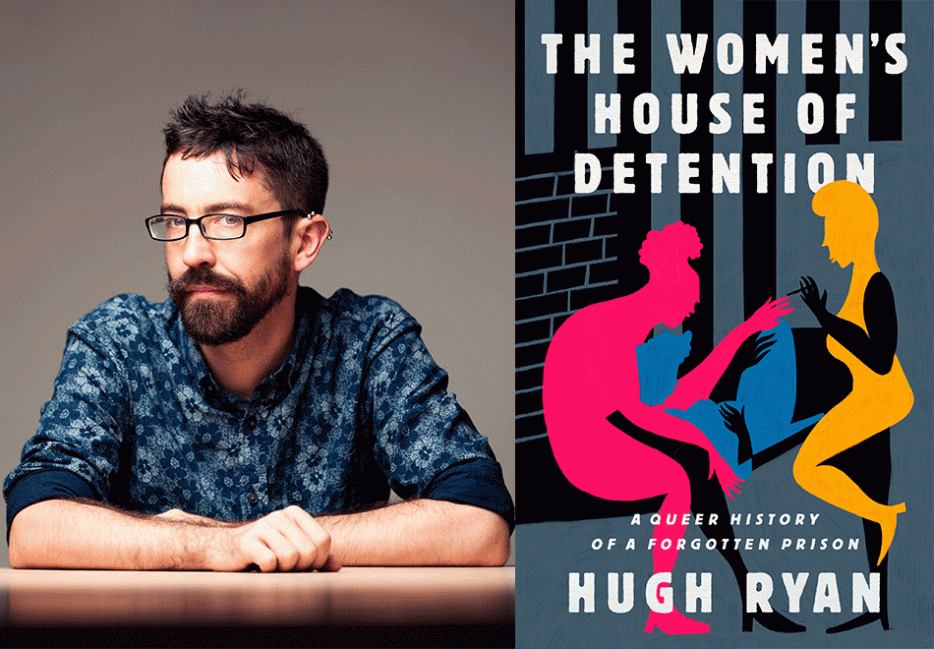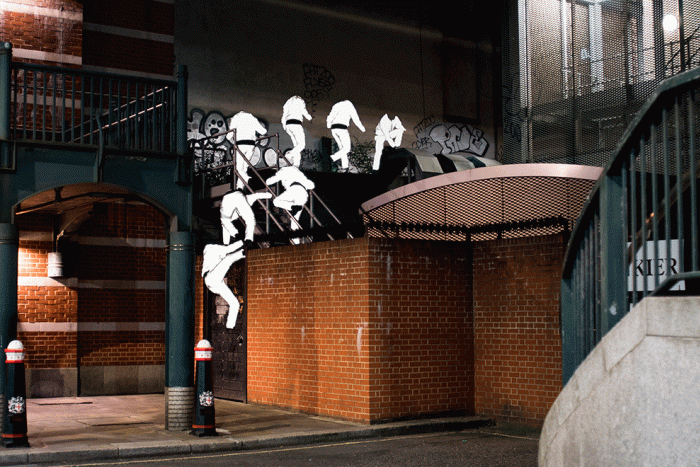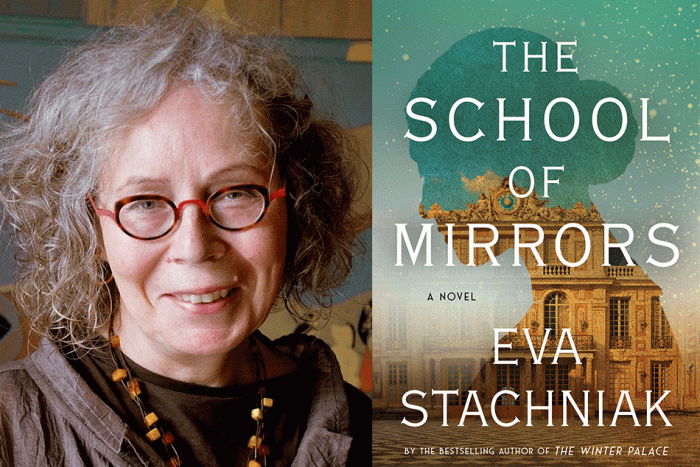In the 1930s, Alice moved from a rural town in New England to New York City because she wanted to be queer. She fell in love with an opera diva, and for a year, they lived together. Then the diva married a soldier. In an attempt to prove she wasn’t lesbian, the singer forced Alice to watch her have sex with her new husband. Alice had a psychotic breakdown and ran screaming from the apartment. The police found her two days later, dirty and hungry, wandering the streets with no idea who she was. They arrested her for prostitution and brought her to the Women’s House of Detention in Manhattan’s Greenwich Village neighbourhood and, according to author Hugh Ryan, “for the rest of her life, she was connected to the carceral system.”
Most people today do not know there was a maximum security women’s prison in the heart of Greenwich Village from 1931 to 1974. In The Women’s House of Detention: A Queer History of a Forgotten Prison (Bold Type) by Hugh Ryan, author of the widely acclaimed history of gay life in early 20th century Brooklyn, When Brooklyn Was Queer, tells a powerful and deeply researched story of the systematic and persistent criminalization of queer and gender-nonconforming women and transgender men.
Regular stints at the House of D, as it was known to many people incarcerated there, were a fact of life for the often poor, nonwhite, queer women and transgender men in the New York City facility. Today, 40 percent of people in women’s prisons identify as LGBTQ. The Women’s House of Detention describes how queer women and trans men came to be disproportionately incarcerated, and how their experiences and activism shaped the 20th-century struggle for gay liberation.
Nicole Pasulka: This prison has been closed for nearly 50 years; most of the people who were incarcerated there have passed away. What made it seem like a good subject for a book now?
Hugh Ryan: The easy answer is when I was writing When Brooklyn Was Queer, several folks I followed (for the book) had passed through the Women’s House of Detention or the court that was connected to it. That alerted me to its existence, and it shocked me that I didn’t know a 12-storey, maximum security prison had existed in Greenwich Village for most of the 20th century. After that, it seemed like it was everywhere: I found references to the House of D in Audre Lorde’s book Zami, in the writings of Joan Nestle, in movies, in musicals—and then, I found a statistic saying that 40 percent of folks incarcerated in women’s detention centres identify as LGBTQ. This was a crisis of incarceration that we weren’t talking about.
In a broader picture, when I started writing When Brooklyn Was Queer, I thought I was writing the history of an incredibly diverse borough, only to discover Brooklyn was—for most of its existence—98 percent white. I didn’t want to make contributions to queer history that were always centred on whiteness and maleness. Writing about the House of D ensured that I literally could not produce a book like that, no matter what I discovered in the existing archives. I wasn’t going to be writing that story.
How did women end up incarcerated in the House of D?
Women ended up in the House of D for everything from wearing pants to mailing the definition of lesbian (or) committing murder — but the vast majority of folks were there for one of three charges.
One was “vagrancy prostitution,” which in the eyes of the law simply meant being a poor woman who had been arrested. According to New York State legal precedent, you did not have to exchange sex for money to be a prostitute: it was defined simply as the “common lewdness of a woman,” so all poor women were an invitation. to prostitution (charges).
Many girls were placed in the House of D for preventative reasons, either because their parents or guardians thought they were wayward, or because they were seen as at risk for having venereal disease. Under The American Plan, this meant the U.S. government could incarcerate them until they tested negative for syphilis and gonorrhea, without ever being arrested, tried, or found guilty of anything.
The third category, particularly in the later years, was drug charges. After World War II, the U.S. changed its drug laws, and many women got caught up in new punitive carceral solutions to drug problems.
What was the stated objective for incarcerating these women—was it to help or to punish?
The initial objective was rehabilitation, but from the very beginning, everyone involved in the administration understood that what they were doing was not rehabilitating anyone. In their eyes, that was because of a lack of resources, not because of a structural flaw in the prison system. Either way, everyone knew they were not meeting their stated goal.
In what way is the story of this one prison a history of incarceration in the U.S.?
The research taught me that women’s incarceration is fundamentally different from that of men. From the first independent women-only detention centres in the 1870s, the goal was to retrain women to be wives, mothers, and educators of children, because it was believed that was all women could be. As such, it was a forced feminization process. The concern was making them the right kind of women, whereas men’s institutions were simply concerned with not having men return to jail. Women were imagined to have very limited avenues to respectability—wife and mother, or maid, and you had to be feminine to pursue those jobs. Women’s incarceration has always been focused on women who were seen as masculine of centre and therefore has focused on queer women.
The other thing (the research) taught me about 20th-century incarceration is almost everyone agrees that jail primarily functions as a way to get poor people off the streets. I think this tells us a lot about why reform is often a doomed endeavour. The system isn’t about justice or rehabilitation; it’s about warehousing all the people we don’t take care of.
What violence does prison perpetuate against women specifically?
Unless you’ve been there, one of the things few people understand about jail and prison is that every time you enter a facility you are given an invasive cavity search, and in some past instances, a PAP smear. These routine procedures are tantamount to state-sponsored sexual assault. Can you imagine being on trial and having a cavity search every morning before you testify, often done by a male guard or doctor? Knowing that’s what you’re going to face tomorrow, and the day after that, and the day after that?
How is the Women's House of Detention connected to broader struggles for women’s and LGBTQ rights?
Looking at the House of D shows us how the government has routinely punished women seen as masculine of centre simply for existing—under whatever laws the government chooses. At the same time, my research revealed that in spaces where women and trans men gathered, including the House of Detention, they were espousing what we think of as gay liberation and gay pride long before it ever showed up in homophile organizing or liberatory movements of the 1960s and ‘70s. These people bore the brunt of state oppression, and for that reason, understood before anyone else what state oppression of queer people and women looked like, and how it needed to be resisted.
For example, in the 1940s, two young women named Bernice and Renée were in a long-standing lesbian relationship, which their social workers in jail realized. When confronted, both women adamantly said what they did in their own time was their own business; they were not ashamed of who they were and did not feel it was anyone’s business who they loved or think there should be any laws limiting what we today would call “gay rights.” Long before organizations like the Daughters of Bilitis or the Mattachine Society made this argument, these folks, the lumpenproletariat who are often referenced in biographies of more famous queer people, knew these ideas. I often think of this as similar to “freedom dreaming” in Black Liberation traditions. It’s the communal ability to imagine life beyond white-cis-heteropatriarchy and recognize the same struggles in each other, which enables all kinds of leaders to push those ideas forward.
Tell me about some surprising people who were incarcerated. How did they end up there?
In the archives, I came across a woman living during the 1950s from an upper-middle-class Black neighbourhood in Queens. She trained in conservatories for singing, was a keypunch operator (like in the movie Hidden Figures), was active in the growing New York homophile movement, and was a cabaret singer. She and her girlfriend broke up, and she was arrested when someone offered her money for prostitution. In the House of D, the social workers were intimidated by her. Their notes said they were afraid to attack homosexuality because they didn’t want her to think less of them. This isn’t the kind of case we normally think of when we think of Black women being arrested in the 1950s.
How do you get people to care about a prison that’s gone? It’s hard enough getting people to care about prisons that are currently incarcerating people.
I think it’s really hard to get people to care about history in general, and what guides my work is helping people see how history leads into the present day and then writing it in a way that is as accessible, emotional, and narrative as possible. We live and die by stories, and when we present our histories as these dry, static moments that barely involve real people, we deaden the subject and ask people to stop listening.
Then, in your mind, how does the story of the House of D connect to the present?
For me, it always comes back to that statistic: 40 percent of people in women’s prisons identify as LGBTQ. To understand why this came to be, I had to understand how the system came to target masculine-of-centre women, nonbinary folks, and trans men. That is the story of the House of D, but it’s a story that is still operating today though the House of D is closed.
Hazlitt is a Canadian publication, and although the story of the House of D is a story of women’s incarceration in the United States, are there ways to connect this to the Canadian justice system?
The trends and changes in consideration of women’s roles in former British colonies tend to follow similar trajectories. When we look at the history of women’s incarceration, part of what we see is women in a post-Victorian world entering the public sphere in ways they were denied previously. That is not an American story; that is a story of every country with a legacy of British colonialism.
You said earlier that part of the motivation for this project was telling queer histories that didn’t centre on whiteness or maleness. Were you concerned when writing this book that you wouldn’t be able to fairly represent the experiences of groups—like women, trans men, and people of colour, for example—outside your own experience?
When I started this project, a lot of people pushed back on the idea of me as a white cis man writing this book. Most of the time, that pushback came from the point of view of people who assumed that other people would cancel me. That hasn’t been what happened. There are many people who’ve thought long and hard about these issues from different perspectives, who’ve pushed me to think but haven’t condemned me for being a white cis guy writing about women, trans people, and people of colour. It has largely been a nuanced, wonderful conversation I have been welcomed into after doing the work. People who are afraid of “cancel culture” are often actually afraid they won’t do the work, or their work will be crappy, and then they will get called out for it. If my work is crappy, I hope people call me out or call me in to talk about it. But if you do the work well, I don’t think you’ll get many calls to be cancelled, even when you’re writing beyond your own identity.






